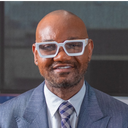What ointments or drugs can be used to increase the success rate? What does one do to prepare for a hair transplant?
Answers (13)
From board-certified doctors and trusted medical professionals
Dr. Jeff Angobaldo, MD

Dr. Jeff Angobaldo, MD
Board Certified Plastic Surgeon
Answer
Dr. Jae Pak, MD

Dr. Jae Pak, MD
Hair Restoration Surgeon, Board Certified in Emergency Medicine
Answer
Dr. Sanusi Umar, MD

Dr. Sanusi Umar, MD
Dermatologic Surgeon, Board Certified in Dermatology
Answer
Dr. Paul L. Leong, MD, FACS
Dr. Paul L. Leong, MD, FACS
Board Certified Facial Plastic Surgeon
Answer
Dr. Jeffrey Epstein, MD, FACS
Dr. Jeffrey Epstein, MD, FACS
Hair Restoration Surgeon, Board Certified in Facial Plastic Surgery
Answer
Dr. E. Ronald Finger, MD
Dr. E. Ronald Finger, MD
Board Certified Plastic Surgeon
Answer
Dr. Allan J. Parungao, MD
Dr. Allan J. Parungao, MD
Hair Restoration Surgeon, Board Certified in Plastic Surgery
Answer
Dr. Sara Wasserbauer, MD - Account Suspended
Dr. Sara Wasserbauer, MD - Account Suspended
Board Certified Hair Restoration Surgeon
Answer
More Hair Transplant Questions
See all Hair Transplant Q&AWE SEND PRETTY
EMAILS
What’s trending? Who’s turning heads? Which TikTok myths need busting? We’ve got you. No fluff, no gatekeeping—just real talk. Get our free, unfiltered newsletter.
